Leslie DMonte in Mumbai
Last November, Idea Cellular ran a campaign called 'No Idea; Get Idea' with its brand ambassador Abhishek Bachchan urging fellow mobile subscribers to subscribe to Idea rather than wait endlessly for another telecom operator's contact centre to respond to their service query or to bring down their monthly mobile bill, among other things.
Major telcos ran similar campaigns around that time.
How Idea Cellular won the MNP game
Image: Idea Cellular ad.Almost six months after MNP was implemented, Navanit Narayan, chief service delivery Officer of Idea Cellular, an Aditya Birla group company, is breathing easy.
While the media campaign played its part in creating awareness, he believes it's Idea's quality of service that did the trick, and helped his company create stickiness.
How Idea Cellular won the MNP game
Image: Idea Cellular ad.Idea Cellular's losses were the least if port in to port out or PO/PI ratio is anything to go by.
The PO/PI ratio is arrived at by dividing the number of users that joined a particular telco by the number of users that shifted loyalty. Going by this calculation, Idea seems to have done better than other operators.
How Idea Cellular won the MNP game
Image: Idea Cellular ad.Players like Reliance Communications (RCom), Tata Teleservices and BSNL have been the main losers in the MNP game.
"Idea retains the No. 1 position in this space with a comfortable net gain lead of 47,359 over number two operator and 100,264 over the number three operator (data as on June 19). We continue to lead the MNP race in Tamil Nadu, Karnataka, Mumbai, Madhya Pradesh, Andhra Pradesh and Maharashtra," says Narayan.
How Idea Cellular won the MNP game
Image: Idea Cellular ad.Alok Shende, principal analyst of Ascentius Consulting, acknowledges that "Idea has been very proactive in their mission to endear customers".
How Idea Cellular won the MNP game
Image: MNP works for Idea.So the fallout was predictable, he reasons, cautioning that "the real battle for MNP is yet to begin". Srishti Anand, IT & Telecom analyst from Angel Broking, concurs that MNP has its own dynamics, regardless of the efforts of telcos.
How Idea Cellular won the MNP game
Image: Idea ad.Idea Cellular is now the third-largest mobile services operator in India in revenue terms, and recorded a subscriber base of over 93.75 million as of May 31, 2011. It became a pan-India integrated GSM operator in 2009-10.
To achieve "a customer-focused enterprise", this February Idea Cellular invested in a customer relationship management (CRM) application from Oracle (Siebel CRM 8.0).
The application, Crystal, "has empowered all customer-facing agents to take better decisions while serving customers," says Narayan.
How Idea Cellular won the MNP game
Image: Idea ad.It has been rolled out across 20 of the 22 Idea Circles, in a phased manner ensuring effective change management and seamless handholding.
Consequently, Idea's customers can get their queries addressed from any part of the country regardless of where they subscribed from.
How Idea Cellular won the MNP game
Image: 70 million subscribers."Idea is the first Indian operator to implement packaged CRM for the prepaid market, which constitutes around 95 per cent of the Indian telecom market. Crystal records over 150 million customer transactions every month," claims Narayan.
Idea Cellular simultaneously envisaged a hub and spoke model. The contact centres in the metros can be likened to the hubs.
How Idea Cellular won the MNP game
Image: Idea ad.A call first lands at a hub, and is then routed to a spoke on the basis of the caller line identification. The focus was on building a robust contact centre.
"We have hubs in Indore, Aurangabad, Coimbatore, Hyderabad, Kolkata and Gurgaon. Spokes are in cities like Ranchi, Raipur, Dehradun and Hubli. The interest was on large user bases and Tier-II towns. Many people migrate from these towns, so we wanted to go where our users were," explains Narayan.
How Idea Cellular won the MNP game
Image: Idea Cellular gets popular."Around 15 years back, we had around 500 stores. Today, we have 3,058 stores across 2,400 cities," Narayan says.
The company relies primarily on the franchisee model. It owns only 24 of these stores. The rest have been developed on a revenue-sharing model with franchisees who "get revenue according to the level of customer service and the product they sell".
The idea, says Narayan, is to have "neighbourhood" stores (modelled on kiranas) so that every Idea Cellular user in small towns can access one such store within half-an-hour.
How Idea Cellular won the MNP game
Image: Idea 3G.One of the milestones was to comply with an international quality management system. Idea is also sharpening its focus on users from tier II towns knowing these are low ARPU users.
Narayan counters that these towns are not saturated so Idea can expand its base. Besides, he believes that 3G can be a game changer since many of these users "who did not have net access so far, can now make calls, surf the net or watch videos".
How Idea Cellular won the MNP game
Image: Idea ad.Idea Cellular has a license to offer 3G services in 11 service areas, which generate over 81 per cent of the company's total revenue.
It launched its 3G services in nine circles. Currently, 10 per cent of Idea's subscribers in the markets are said to be using 3G-enabled handsets. It is expected that these users will be the early adopters of 3G services.
Idea's 3G services comprise video conferencing, mobile TV, video on demand, and high-speed internet browsing.
How Idea Cellular won the MNP game
Image: Idea gets innovative.To promote usage, it introduced sachet pricing offering trial packages with per day billing. To spread awareness about its 3G services, Idea Cellular set up 344 experience zones in 91 cities.
The total count of service centres across the country crossed the 3,000 milestone at end 2010-11.
How Idea Cellular won the MNP game
Image: Idea ad.Around March end this year, Idea Cellular also launched its online application store based on Ericsson's eStore solution to help its 2G and 3G subscribers, using mobile handsets that support web browsing, choose from more than 30,000 applications - both free and paid.
How Idea Cellular won the MNP game
Image: Idea ad.All these efforts have paid off. Within one month, Idea Cellular had 1 million 3G users. The number is expected to soon cross 2 million.
Calls are going through
Most analysts believe Idea Cellular is on a good wicket. According to Bhavesh Gandhi, research analyst with IndiaInfoline, Idea has positioned itself strongly in the 3G space.
How Idea Cellular won the MNP game
Image: More room for growth.In a June 22 report, he notes that domestic value-added services revenues have been in the 12-15 per cent range for incumbent operators like Bharti, Idea and Vodafone but these have enough headroom to expand as globally non-voice revenues are 22-25 per cent for mature operators.
How Idea Cellular won the MNP game
Image: Airtel ad.Macquarie research analysts believe that the biggest benefit is for players who also hold 3G spectrum in the corresponding circles. They believe Bharti and Vodafone are best placed to benefit, followed by RCOM and Idea.





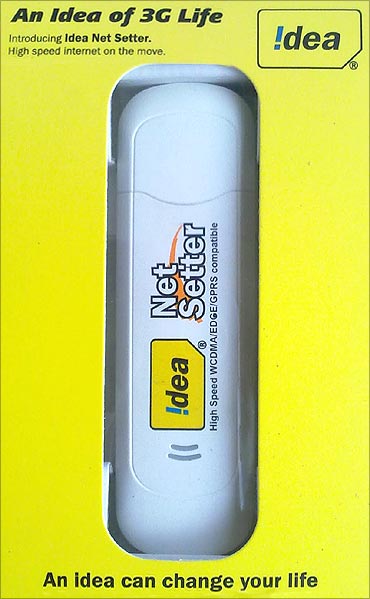

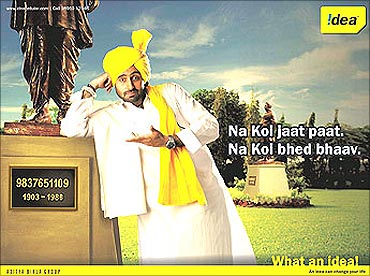
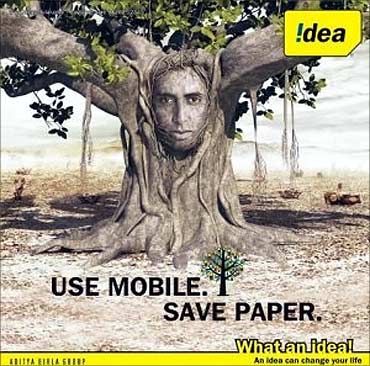
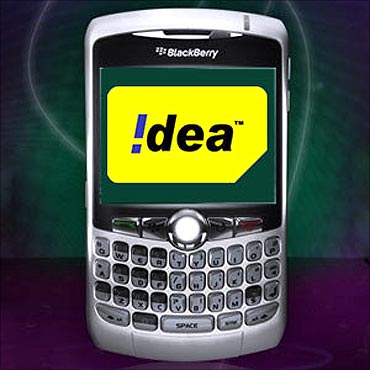
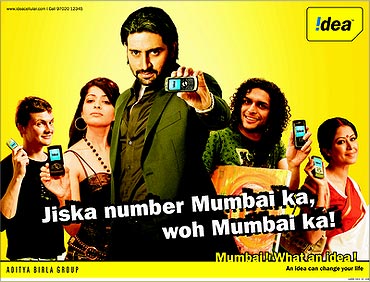
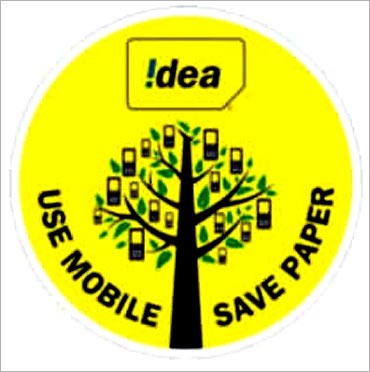

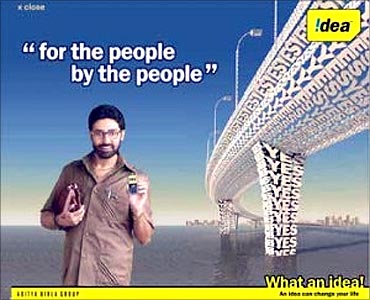


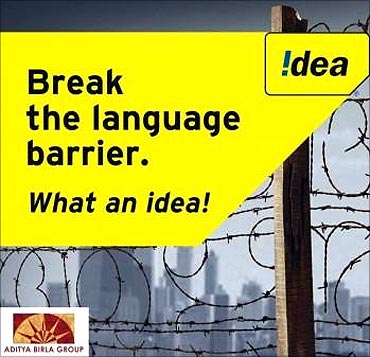
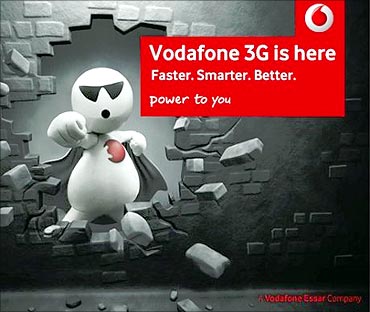


article